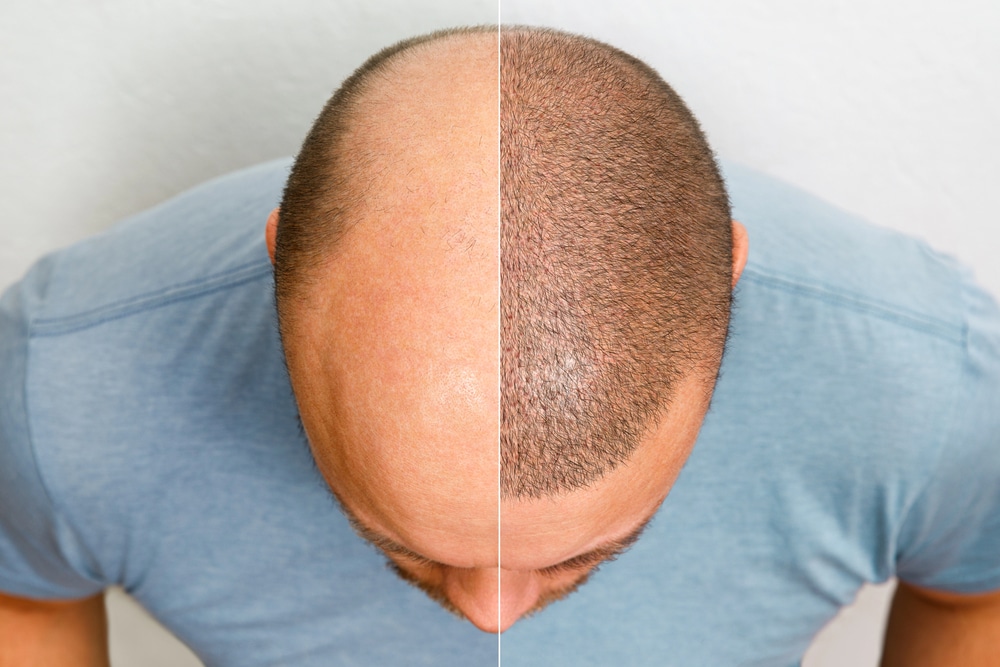Article At A Glance
- Explore the key differences between forehead reduction surgery and hair transplants.
- Find out who benefits most from these procedures and their unique advantages.
- Learn about the recovery process, side effects, and long-term outcomes for both options.
- Understand the financial implications, including costs and insurance considerations.
- Get professional guidance on choosing the right treatment for your aesthetic goals.
Who Typically Opts for Forehead Reduction?
Forehead reduction surgery is particularly appealing to individuals who feel that their forehead is disproportionately large or high. This surgical procedure focuses on creating balance between facial features by lowering the hairline. It is an excellent option for:
- Women who naturally have a high forehead due to genetics.
- Individuals with adequate scalp flexibility for effective surgical advancement.
- Patients without significant hair thinning or future risk of receding hairlines.
Men typically require a different evaluation before undergoing forehead reduction surgery. This is because male-pattern baldness or ongoing hair loss may result in inconsistent outcomes over time. Understanding who qualifies as an ideal candidate ensures that patients have realistic expectations and achieve the best results.
On the other hand, a hair transplant is frequently recommended for individuals experiencing hair thinning, bald patches, or a receding hairline. People choosing hair transplants focus more on recovering hair density rather than altering the forehead proportions.
Side Effects and Recovery Considerations for Hair Transplant
Hair transplant surgery, though effective, comes with a set of common post-procedure side effects and recovery periods that patients should be prepared for.
Possible Side Effects
- Swelling or Discomfort: The scalp may swell or become sensitive around the donor and recipient areas.
- Scabbing and Itching: Small scabs may form around freshly transplanted follicles, typically resolving within a week.
- Shock Loss: Transplanted hair might fall out initially, but this is part of a normal growth and healing process.
Recovery Timeline
Patients can generally return to light activities within a few days post-surgery. However, visible improvements tend to begin after three months as new hair growth appears. Full results typically take 12 months.
This relatively straightforward recovery makes hair transplant procedures more accessible to those looking for natural density restoration without extensive downtime.
Comparing Forehead Reduction and Hair Transplant
When it comes to forehead reduction vs hair transplant, it’s critical to understand how these two options differ and cater to various needs.
Goals
- Forehead Reduction Surgery: Designed to create a proportional forehead-to-face ratio by lowering the hairline.
- Hair Transplants: Aimed at increasing hair density and repairing thinning areas for a fuller appearance.
Long-term Results
Forehead reduction surgery provides immediate and permanent results, as the hairline is physically advanced. On the other hand, transplanted hair grows naturally but may require additional sessions if hair loss persists.
Conditions Treated
Forehead reduction specifically addresses issues of facial proportions. Hair transplants, however, are better suited for individuals coping with hair thinning, bald patches, or receding hairlines due to conditions like alopecia.
Surgical Techniques Involved
Both procedures are intricate and require the expertise of a skilled surgeon. Here’s how the techniques compare:
Forehead Reduction Surgery
This surgical procedure typically involves:
- Marking the New Hairline: A consultation is conducted to determine the ideal position of the new hairline.
- Incisions and Scalp Advancement: Excess forehead skin is excised, and the scalp is moved forward to close the gap.
- Suturing: The incision is carefully closed, often with techniques designed to minimize scarring.
Hair Transplant Techniques
- Follicular Unit Extraction (FUE): Individual hair follicles are extracted and transplanted using fine instruments.
- Strip Harvesting (FUT) involves removing a strip of scalp, dissecting follicles, and implanting them where needed.
While forehead reduction offers immediate visual changes, hair transplants provide gradual results, emphasizing natural hair density.
Longevity and Maintenance of Results
The longevity and maintenance of your results depend on the procedure you opt for.
Forehead Reduction
Once completed, forehead reduction surgery provides permanent results without the need for follow-up interventions, as long as the patient does not experience hairline changes in the future. It’s a one-time commitment for long-term proportional aesthetics.
Hair Transplants
Hair transplant results are generally long-lasting but require:
- Regular maintenance of the implanted hair.
- Possible touch-up treatments to address progressive hair thinning.
Both procedures are impactful and cater to long-term improvements. However, some patients seeking hair transplants may need ongoing care to maintain the desired appearance.
Differences in Recovery Times
Forehead reduction surgery tends to have a recovery period of about 10-14 days. During this time, patients may experience slight swelling and tightness in the scalp but can typically resume light activities within the first week. Hair transplant recovery is shorter, with most people returning to normal routines within two to five days, but fuller results take months to manifest.
Your choice of treatment may depend on how much downtime you can accommodate and whether you prefer immediate results over gradually developing outcomes.
Financial Considerations Between Two Treatments
Cost is a significant factor in choosing between forehead reduction and hair transplant.
Cost Comparison
The average cost for forehead reduction surgery ranges from $7,000 to $15,000, depending on the clinic and surgical complexity. Hair transplants, in contrast, are often priced per follicle and typically cost between $4,000 and $15,000 per session. Keep in mind that hair transplants may require multiple sessions, which can increase the overall expense.
Insurance and Financing Options
Cosmetic surgeries, including both forehead reduction procedures and hair transplants, are usually considered elective and are not covered by insurance. However, many clinics offer financing plans to make these treatments more accessible. Always consult with your provider to explore available payment options.
Making the Right Choice
Deciding between forehead reduction surgery and a hair transplant depends on your aesthetic goals, health conditions, and budget. Scheduling a personalized consultation with an expert surgeon will help clarify which procedure aligns with your expectations and needs. Both treatments are transformative, but the right choice is the one that effectively addresses your unique concerns.
To take the next step toward achieving your ideal appearance, consult with an expert who understands your unique needs. Dr. Sidle is here to guide you through your options and help you make an informed decision about the best treatment for your goals. Call Dr. Sidle today at (312) 695-8182 to schedule a consultation and explore how forehead reduction surgery or a hair transplant can enhance your confidence and transform your look.



